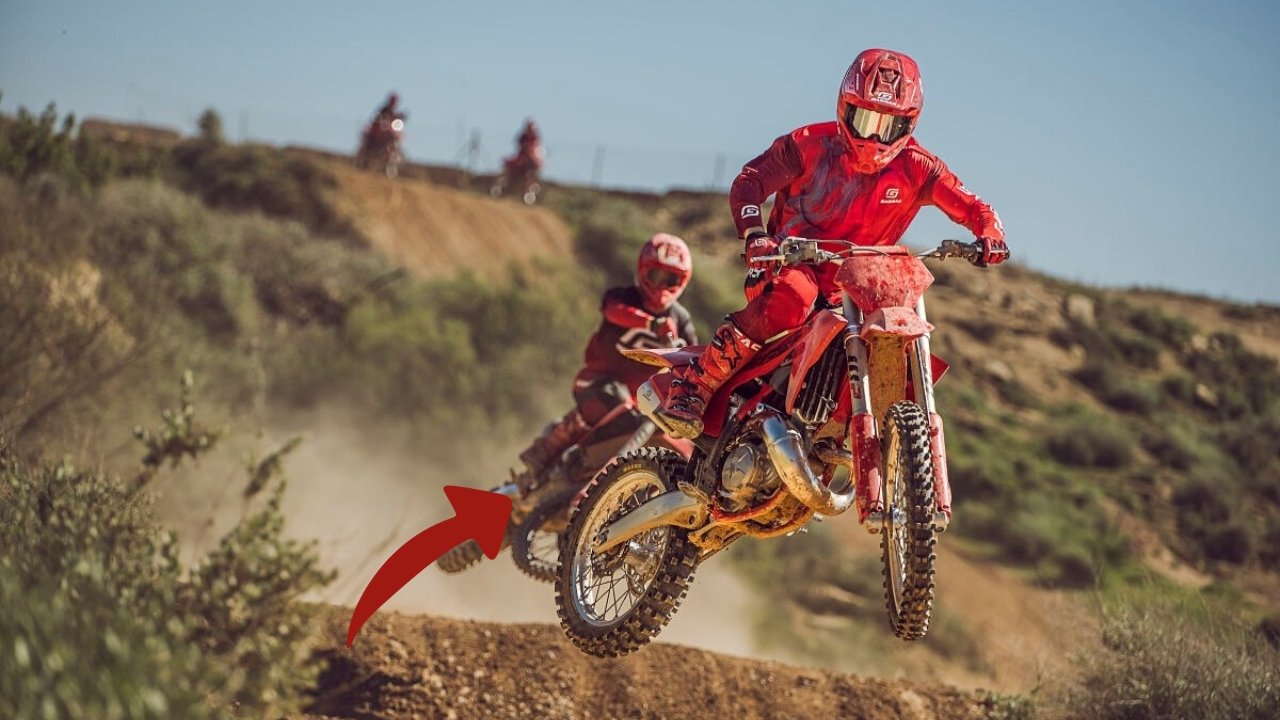Three Main Types of Dirt Bike Racing: Dirt bike racing is an adrenaline-pumping sport that showcases the skills, speed, and precision of riders. Among the various forms of racing, three primary disciplines dominate the scene: supercross, motocross, and enduro. Each type of racing brings its own set of challenges and thrills, requiring riders to master different skills and adapt to varying terrain and conditions. Here’s a breakdown of each discipline and what sets them apart.
Contents
The Basics of Dirt Bike Racing Disciplines:
- Supercross: A highly technical, indoor form of racing featuring artificial tracks with tight turns, steep jumps, and rhythm sections. Precision, control, and quick reflexes are paramount here.
- Motocross: Raced on outdoor tracks with natural terrain, motocross focuses on speed, bike handling, and the ability to navigate rough conditions like mud, hills, and tight corners.
- Enduro: Known for being the most physically demanding, enduro races take place across varied and rugged terrain, with courses lasting several hours. Riders are challenged not only by the landscape but also by the test of stamina and endurance.
Each of these disciplines offers something unique. Supercross is known for its thrilling indoor environments and short, sharp races. Motocross offers high-speed action on natural tracks, and enduro races are endurance tests over long distances with unpredictable conditions.
A Historical Comparison of Supercross, Motocross, and Enduro
Motocross: The Foundation of Dirt Bike Racing
Motocross, as a sport, traces its origins to early 20th-century Britain where it was initially known as “scrambling.” The races took place on natural, uneven terrains, where riders faced the challenges of mud, uneven ground, and steep hills. Over the years, the sport evolved into a global phenomenon, thanks to its accessibility and thrilling nature. Today, professional motocross events showcase the raw excitement and skill needed to dominate the rugged outdoors.
Riders need to navigate unpredictable weather, making bike control crucial. The appeal of motocross lies in the challenge of racing through natural terrains and tackling the unexpected.
Supercross: The Stadium Spectacle
Supercross came about in the 1970s as a more spectator-friendly adaptation of motocross, designed specifically for indoor stadiums. The tracks are engineered to include sharp turns, steep jumps, and rhythm sections, which create an intense racing experience. Unlike motocross, supercross features artificial obstacles, like whoop sections and doubles, within a confined space.
Supercross is known for its shorter, high-octane races that keep the crowd on the edge of their seats. Events like the Monster Energy AMA Supercross have popularized this form of racing, and with the rise of media coverage, supercross has cemented itself as one of the most popular forms of dirt bike racing globally.
Enduro: The Ultimate Test of Endurance
Enduro racing is perhaps the most grueling of all dirt bike disciplines. Focusing on endurance, these races cover vast distances across rocky trails, steep inclines, muddy paths, and forests. Unlike motocross or supercross, which emphasize speed and technique on closed tracks, enduro riders need to adapt to ever-changing conditions over long durations, often lasting several hours.
Enduro races are mentally and physically taxing, requiring not only bike handling skills but also exceptional stamina. Riders face various obstacles, like fallen trees, streams, and challenging ascents, all while navigating unpredictable terrain. The sport’s appeal lies in its demand for resilience and its ability to push riders and their bikes to the limits.
Track Layouts: Supercross, Motocross, and Enduro
Each type of race has its distinct track design, tailored to the specific demands of the discipline.
Supercross Tracks: Designed for Precision and Thrills
Supercross tracks are built for adrenaline-fueled action inside stadiums. These tracks are meticulously designed, featuring tight corners, jumps, whoops, and rhythm sections. Riders must navigate these compact courses with precision, often at high speeds. Supercross events are fast-paced, with short lap times, creating a thrilling spectacle.
Since supercross is indoors, the conditions are predictable, and the lighting is consistent. Riders face a controlled environment where technical skills and quick reflexes are paramount. For spectators, supercross offers intense action and dramatic finishes.
Motocross races take place outdoors, on natural terrains that vary depending on the region. These tracks can be muddy, hilly, or bumpy, creating a highly unpredictable environment for the riders. The open nature of motocross courses allows for high-speed racing, but the uneven terrain requires riders to have great control over their bikes.
Unlike supercross, the conditions in motocross can change rapidly due to weather, making each race unique. The challenges presented by the outdoors are part of what makes motocross so exciting for both riders and fans.
Enduro Tracks: Rugged and Unpredictable
Enduro tracks are the most difficult of all. The courses typically span miles, stretching through forests, rocky landscapes, and streams. These races last several hours, requiring riders to endure both physical exhaustion and mental fatigue. Unlike supercross or motocross, enduro races aren’t about speed but about surviving the challenging terrain over long distances.
The nature of enduro racing means that no two races are the same. Riders may encounter fallen trees, water crossings, or slippery mud—each race tests the adaptability of the rider and the durability of the bike.
Gear for Racing: Protecting Riders and Enhancing Performance
No matter the discipline, the right gear is essential for both safety and performance. While supercross and motocross share similar gear needs, enduro racing requires extra protection due to the rugged nature of the terrain.
Gear for Supercross and Motocross
- Helmet & Gloves: A well-fitted helmet protects the head from impacts, while gloves offer grip and control.
- Jersey & Pants: Flexible, breathable, and abrasion-resistant, these garments help with comfort and mobility.
- Boots: Motocross boots provide ankle support and protect against impacts while allowing control during jumps.
- Body Armor: Chest protectors, elbow guards, and knee protection offer added safety during falls.
Enduro-Specific Gear
- Extra Armor: In addition to the standard gear, enduro riders wear chest and shoulder armor, as well as neck braces, to protect themselves from rough terrain.
- Durable Fabrics: The fabric used in enduro gear is typically reinforced to withstand wear and tear from branches, rocks, and other obstacles.
- Hydration Packs: Given the long durations of enduro races, hydration packs are crucial to maintaining energy and focus.
FAQs: Dirt Bike Racing Disciplines
1. What is the difference between supercross and motocross?
Supercross is raced on engineered indoor tracks, featuring tight corners and artificial obstacles. Motocross, on the other hand, takes place outdoors on natural terrain, requiring riders to adapt to varying conditions like mud and hills.
2. Which type of racing is the most physically demanding?
Enduro racing is the most physically demanding of the three disciplines, as it requires riders to cover long distances across rugged terrain while maintaining stamina and mental focus.
3. Can a rider switch between supercross, motocross, and enduro?
While there are similarities in bike handling, each discipline has its own set of skills and conditions. A rider who specializes in one may need additional training to compete in the others, particularly in terms of endurance for enduro or precision for supercross.
4. What gear is essential for dirt bike racing?
At a minimum, all riders need a helmet, gloves, boots, and protective clothing. Enduro riders may require additional armor, neck braces, and hydration packs due to the demanding nature of the sport.
Conclusion
Whether you’re drawn to the precision and indoor thrill of supercross, the speed and adaptability of motocross, or the endurance challenge of enduro, each discipline offers a unique experience. Riders must choose based on their skill set and preferences, but one thing is clear: dirt bike racing is an exciting and evolving sport with a place for all types of riders.




